
Best Earth Images of the Week Apr. 27, 2012
Pygmy Hippo Babies, Rare Leopards and Unique Clouds
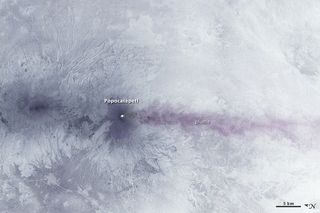
Some truly amazing photos made our picks this week.
The photo above is Mexico's Popocatépetl volcano, the second-highest in North America, which is still sending up plumes of gas and fine ash, but with a decreased vigor following more than a week of a rather dramatic uptick in activity.
Although the mountain has been erupting at a low level since January 2005, the volcano began emitting a substantial amount of ash on April 12 this year, and an explosion on April 13 sent volcanic rocks as far as 1,640 feet (500 meters) away from the crater rim.
[Full Story and Video: Satellite Captures Mexican Volcano's Unceasing Eruption]
Encouraging Finds
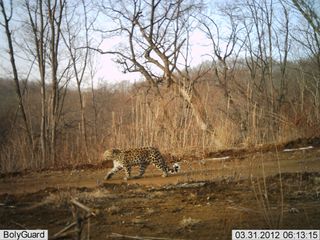
Rare, endangered Amur leopards have been photographed by camera traps for the first time in China in a protected area, the Wildlife Conservation Society announced today (April 25).
Last month, the reserve staff set up 16 camera traps in areas where tiger and leopard tracks were found during winter survey. Several images of Amur (or Siberian) tigers were also snapped by the cameras.
[Full Story: First Camera Trap Photos Taken of Rare Leopard in China]
Check Out That Chick
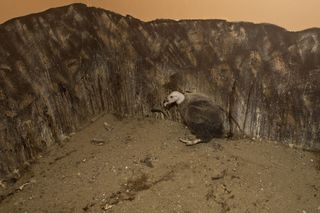
The San Diego Zoo Safari Park's 6-week-old California condor, Saticoy, got its first veterinary check up on Monday (April 23) and looked to be in excellent health.
After its visit with the doctor, the chick settled quickly back into its nest.
Since the California Condor Recovery Program began in the 1980s, when there were only 22 condors left in the world, the Safari Park has hatched 174 chicks and released more than 80 condors into the wild. Today, there are approximately 386 condors, more than half of which are flying free in California, Arizona and Baja California, Mexico.
[Full Story: California Condor Chick Has First Vet Check-Up]
Waves Over the Indian Ocean
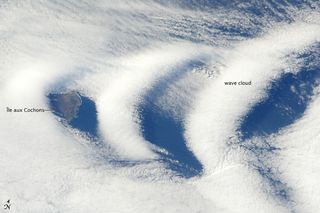
The arresting shape of so-called wave clouds were caught on camera by an astronaut on board the International Space Station as it flew over the southern Indian Ocean.
The wave clouds sit at higher levels. The form when the air mass passes over the summit and descends, and encounters alternating moist and dry air layers, enabling the formation of the discontinuous, chevron-shaped wave clouds.
[Full Story: Wave Clouds Showcased in Astronaut Photo]
Standing out in the Crowd
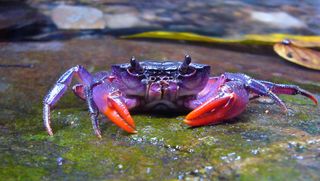
Four new species of crab that sport some wild colors have been discovered near the Philippine island of Palawan.
The newfound species are threatened by mining activities in the region, which is one of the world's major biodiversity hotspots, its discoverers said. About half of the species that live on Palawan are endemic, meaning they are found nowhere else.
[Full Story: Bright Purple Crab Discovered in Philippines]
Nap Time
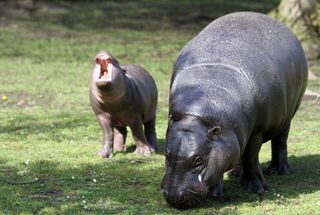
The Edinburgh Zoo's baby pygmy hippo, Eve, has a lot of work to do growing up. She was caught in the middle of a yawn by photographers while out for a stroll in her enclosure with mom, Ellen.
Mother and baby have a tight bond, the zoo says, spending time together in both their indoor and outdoor enclosures.
[Full Story: It's Tough Work Being This Cute]
Sign up for the Live Science daily newsletter now
Get the world’s most fascinating discoveries delivered straight to your inbox.











